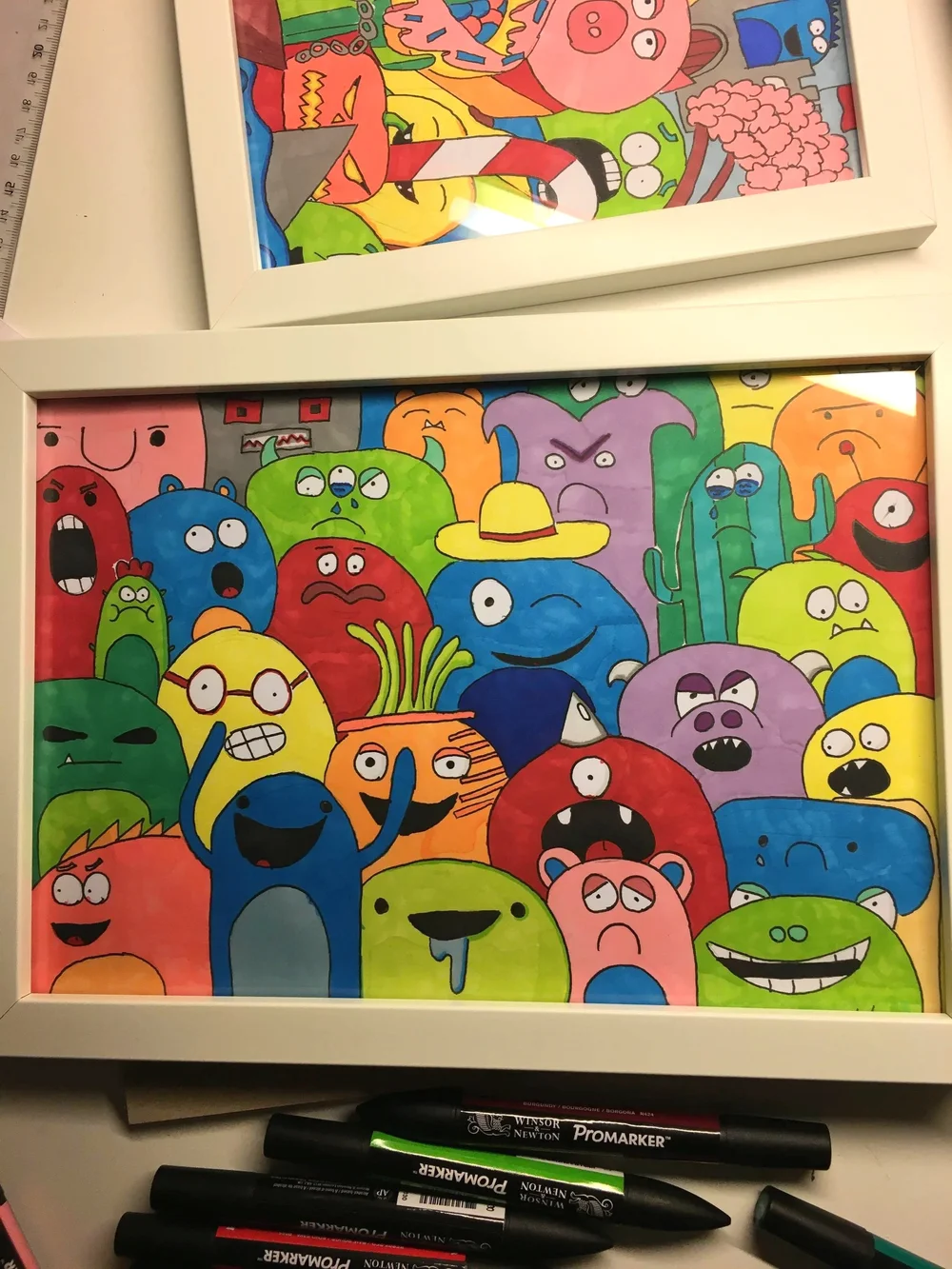The Conversation Piece #10: How to Develop a LEGO Style

“The Conversation Piece” is a monthly BrickNerd series about creativity and building with LEGO authored by our friends over at the Builder Improvement Initiative (BII), a Discord-based community that helps LEGO builders of all levels get better at their craft through knowledge-sharing and constructive feedback.
Have a question you would like us to consider for a future article? You can submit it here. Enjoy!
Developing Style
FS Leinad asks: “How does a builder's style develop? How does style develop? Is it better to strive for a consistent style or to branch out?”
As discussed in last month’s article, style is the way we define our builds and design language. Through the use of specific genres, colour theory, texturing, shape language, and parts usage, we can add our own unique touch to set our creations apart from those of the rest of the community.
But what does developing a building style look like in practice? Analyzing what helps shape our style is one thing, but understanding the thought processes that go into our stylistic choices is a more nuanced conversation. Developing a signature building style is a process that continues over the course of our building journey. To take a closer look at how an individual’s building aesthetic takes shape, we asked three Builder Improvement Initiative contributors to break down their respective and distinctive styles.
From Paper to Plastic: Byggi (Instagram)
For as long as I can remember, I’ve loved and built with LEGO, but it wasn't until I was 15 that I started to build things from my own imagination. Early on, I didn’t have an intentional focus on style, so I just built whatever and however I wanted to. I’ve built everything from an animated piece of bread (foreshadowing!) to a playable tic-tac-toe board. The more I built, the more I realized that I liked to build creatures and characters. However, I still hadn’t developed a specific style in my builds.


Before I started this building journey, I drew a lot. I primarily drew very cartoony characters with big expressions and funny-looking shapes. One day, I had the idea to translate these cartoony characters into LEGO builds, which was the most fun I had had with bricks to that point. That moment inspired my current cartoony character style that I use in all my builds. This was the beginning of a style that made it possible for my creative and crazy ideas to translate well into bricks. This was what would later become my brutal-but-cute food scenes or my cartoon builds of existing characters like Wallace and Gromit or Marge and Homer Simpson.
View fullsize
View fullsize

Loke’s cartoony drawings that later shaped his brick-building style.
I would say the most important part of finding your style is finding joy in what you build. It is nice to have a recognizable and memorable style, but you should always have fun building instead of feeling pressured to build with your specific style. I've experienced this when building existing characters. After I built one of the emotion characters from the Inside Out franchise, people expected me to build all of the emotions. I built the four ones that I liked the most and thought would be most fun to build, then moved on to new projects because I felt happy with what I had built.
For anyone who hasn’t found their building style yet, keep building different things until you find what you enjoy building the most! Don’t care what other people want you to build, build what makes you happy. At the end of the day, this is your hobby and you build for only yourself!





Loke’s building journey, from KFOL to AFOL
A Moebius Trip: Nick (Instagram)
Style is always an interesting topic. I’ve always said ‘I don’t really have a style,’ just like how I wouldn’t call myself a naturally creative person in the typical sense. Looking through all my LEGO builds in the past three years, there’s no set theme or technical way of building which I have stuck to. I wasn’t always that kid drawing their next masterpiece. The creativity I have today comes from having explored new hobbies and ways of enjoying life. Writing this article has helped me to see what exactly my style is.
Often, I have a concept I want to make, but sometimes I am unsure of how to piece the components together. Looking at a variety of works helps me focus on the specific aspects I like and what would fit with my overall vision. I pull a lot of inspiration from how forms flow in Art Nouveau and the little things that make Moebius-inspired art pop. Shows like Scavenger's Reign, gorgeous games like Neva, and the ideas behind stories like Nausicaä of the Valley of the Wind are perfect examples of what influences my style.

The build that best represents my style and the way I like to build most is “The Golden Wasteland.” For this build, I used the idea of broken, ruined large structures engulfed within a harsh landscape to show nature still thriving around our ‘mistakes ’: the large structures left to ruin. Journey is a game I always come back to; I consider it one of the best independent games ever. The colours, environment, and story are incredible, all without a single word shown or spoken. For the build, I really wanted to draw upon the ideas presented by the story and its world.

Concept art from the game Sky: Children of the Light helped me realize I could push the style even further by incorporating a striking color scheme. Originally, I planned to use a darker range of analogous colours, adapted from the structures in Journey. However, while experimenting, I found white contrasted well against a sandy landscape. Adding a blue-to-purple gradient to show damage and decay pushed my original colour palette further in a new direction.

There are several elements to the art direction of the references I used that unite their styles, such as clean, smooth surfaces with isolated sections of texture and bold uses of color. Every design choice I made was to match the look I had in mind. I created a bunch of table scraps for the towers, terrain, and random adornments following these principles. The parts and techniques used in this build are not overly complex, and specialised pieces are used only where necessary. Finding ways to work with style constraints is the best way to, in turn, find your style.
I believe this build was a success: not because it turned out like I thought it would, but because the style stayed true to my original vision. Some might argue that the building techniques you use play a larger part in what makes your ’style’, but I look at it in a different way. Get inspired by what you make and create what you want to see. To really find your style, you have to love the process of creating. That is the easiest and most effective way to discover where you want to take yourself, and your ‘style’ will follow.
The Great Outdoors: Jackson (Instagram/Flickr)
I would break my development of style into three main categories: building (literally putting the blocks together), education, and life experiences.
The first and most obvious way my style has developed is through practice, feedback, and taking inspiration (or stealing) from other builders’ techniques. Throughout this process, I would build often, talk to other builders about what I could improve on, and look to established builders for aesthetics, techniques, and concepts that I found cool. The communities you surround yourself with will help guide your style in a way that will fit right into your desired genre of builds.
The second factor that has inspired my style was going to university. While perhaps not attainable for everyone, the important bit here is the learning and research aspects of school as they related to my choice of studies. I was a Geography major and an Art History minor, exposing me to many different art and urban design principles, which align with the genre I tend to build in. Learning general concepts in art/design theory and how many artists approach design is a huge step forward in developing how you build. One such artist I have taken inspiration from has been Barnett Newman, whose theory and approach I look up to greatly. Who’s Afraid of Red, Yellow and Blue III (my favourite piece) has such an intricate theory built on his life experience that has often made me consider my own approach to art.

Who’s afraid of Red, Yellow and Blue III, Barnett Newman
The third and most important part of my stylistic development has been touching grass. Getting outside and seeing the world is easily a huge inspiration for my personal style. Picking up other hobbies, spending time with friends, and just being active have easily been the biggest contributors to how my style developed. Outside of LEGO, one of my main hobbies is urban photography, which has taught me to see the world through an objective lens and different visual perspectives.
View fullsize
View fullsize

View fullsize

View fullsize

Jackson’s stills highlight how style can come from lived experience, practice, community, and the willingness to learn.
Style Points!
While every builder’s path to style is different, no one’s journey is inherently unique. Style is something that develops naturally by embracing your interests and honing your craft. Rather than rushing or forcing yourself to have a style, look at a variety of things until you find something that excites you. Choosing a focal point that you have a strong interest in will make the creative process more enjoyable. Once you have a central focus, it can guide you to other sources of inspiration to hone your style.
Nick offers a bit of parting wisdom on the topic:
“Having a defined style does not mean you are immediately a ‘good’ builder, just as a lack of a recognisable style does not make you worse than anyone else. For anyone who doesn’t feel they've found a style yet, all I say is be patient. Style comes from you, and it’s the one thing that you have full control over, no matter what building techniques, scale, or part selection you have available to you. Style is forever evolving; it’s something I haven’t fully figured out and is never something you will fully complete, so at least make it fun!”
Written by Jackson, Nick, and Byggi in collaboration with Eann McCurdy, Julian Collins, and Oshi White.
Have a question for a future article in The Conversation Piece? Let us know in the comments below!
Do you want to help BrickNerd continue publishing articles like this one? Become a top patron like Marc & Liz Puleo, Paige Mueller, Rob Klingberg from Brickstuff, John & Joshua Hanlon from Beyond the Brick, Megan Lum, Andy Price, Lukas Kurth from StoneWars, Wayne Tyler, Dan Church, and Roxanne Baxter to show your support, get early access, exclusive swag and more.


